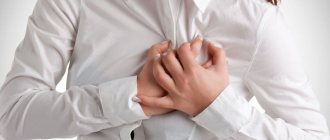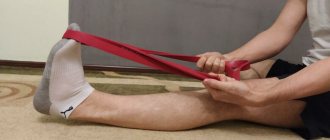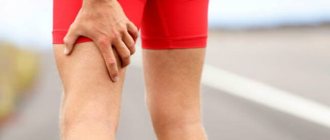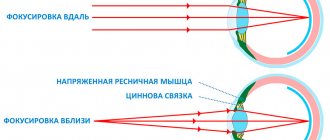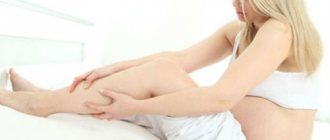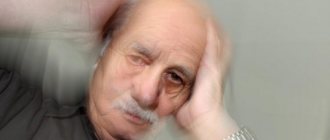A cramp is a painful tonic spasm that is sometimes mistakenly called a cramp. Part of the muscle or the entire muscle can contract. The duration of contraction ranges from several seconds to several minutes. The syndrome develops more often at night in rest and warmth, when the opposing muscles - antagonists - are relaxed. Quite often, muscle spasms are preceded by fasciculations, clearly visible to the eye in the daytime. The attack passes with clear consciousness, there are no associated disorders. Crumpy practically does not occur in children under 8 years of age, but after 65 years of age the frequency increases sharply. In older people, tonic muscle contractions impair the quality of sleep or cause insomnia.
The frequency of muscle involvement is distributed as follows:
- muscles of the leg and foot;
- biceps brachii;
- extensors of the fingers;
- muscles of the trunk and diaphragm;
- submandibular
A distinctive feature of crampy is severe pain that occurs at the moment of muscle spasm, which stops when it ends. During spasm, the muscle becomes dense and sharply painful when touched. Every 10th person suffers from crampy on a regular basis.
At CELT you can get advice from a neurologist.
- Initial consultation – 4,000
- Repeated consultation – 2,500
Make an appointment
Why does a cramp occur?
The causes are physiological (primary) and pathological (secondary). Relatively safe physiological causes are muscle strain, as well as temporary metabolic disorders.
In a healthy person, muscle cramps are provoked by the following factors:
- unusual long-term, high-intensity exercise;
- non-physiological muscle tension caused by diseases of the spine and joints of the limbs;
- alcohol abuse;
- insufficient sleep;
- smoking;
- violation of the temperature regime - overheating or hypothermia;
- water and electrolyte disturbances (excessive sweating in the heat, insufficient fluid intake, use of diuretics and medications);
Pathological causes of crampy are various diseases and conditions of the organs and nervous system. These include:
- diseases of peripheral nerves – radiculo- and polyneuropathy;
- Parkinson's disease;
- diseases of the central nervous system - spinal amyotrophy, amyotrophic lateral sclerosis, consequences of poliomyelitis;
- multiple sclerosis;
- liver diseases, especially chronic hepatitis and cirrhosis;
- intestinal diseases, especially viral enteritis;
- kidney disease, especially chronic renal failure with uremia;
- muscle diseases – muscular dystrophies, metabolic myopathies;
- endocrine diseases - diabetes mellitus, hypothyroidism, decreased function of the parathyroid glands;
- growth and development of tumors, benign and malignant;
- iron deficiency in the body;
- obliterating diseases of the vessels of the lower extremities;
- heart failure accompanied by edema;
- pregnancy.
Cramps can develop after blood purification operations - hemodialysis and plasmapheresis. In some cases, the cause of convulsive contractions cannot be detected; such conditions are called idiopathic.
There are familial forms when cramps occur in adolescence or old age for no apparent reason. Such forms have a wave-like course and spread to the muscles of the thighs and anterior abdominal wall. A spasm of the mylohyoid muscle is characteristic when, after yawning, its unilateral contraction develops. Researchers believe that the mechanism of hereditary transmission of this form is autosomal dominant. Many people associate cramps with a deficiency of vitamins B and D, as well as electrolytes.
Benign crampy-fasciculation syndrome
Crampy fasciculations syndrome is manifested by prolonged muscle twitching. Most often, twitching occurs in the muscles of the thighs and lower legs.
More than 75% of the population experiences this syndrome.
The symptoms are:
- Itching and trembling in the muscles;
- Involuntary muscle contractions or spasms;
- Stiffness;
- Weakness;
- Muscle pain;
- Symptoms of anxiety and stress.
Benign crampy-fasciculation syndrome and amyotrophic lateral and amyotrophic syndrome (ALS) have similar symptoms, but they are completely different diseases.
The main symptom of ALS is muscle atrophy. As a result of the damage, the muscles atrophy and decrease in size. This condition is accompanied by significant weakness.
In both cases, muscle fasciculation is observed, which is more common in benign crampy-fasciculation syndrome. Twitching occurs during rest, but stops during muscle activity. In ALS, twitching may start in one place and spread to other muscles nearby.
Diagnostic principles
Only a doctor can distinguish a physiological reaction from a pathological condition; it is impossible to do this on your own.
You should not worry only if cramps occur rarely, no more than once a month, and the cause “lies on the surface”, there is a clear connection with physical overload, profuse sweating or other “natural” reasons mentioned above. In all other cases, you need to see a doctor as early as possible to rule out diseases or adjust your medication intake. Particularly noteworthy are long, protracted convulsive contractions that are repeated.
Sometimes muscle tightness and soreness last for several days. An indirect confirmation of long-term cramps is an increase in the level of creatine phosphokinase. Tonic spasm of the muscles of the chest or diaphragm is rare, but can create a picture of a heart or lung infarction.
Careful diagnosis is the basis for successful treatment. Due to the variety of reasons, the examination may take about a week. The diagnostic equipment of the CELT clinic allows us to identify hidden diseases that a person did not know about. An important aspect is the determination of homeostasis indicators and their possible deviations from the norm. The identified changes in water-electrolyte metabolism make it possible to quickly correct the condition.
A set of diagnostic procedures may include, if necessary, not only general clinical tests, but also electroneuromyography, studies of the function of the heart, thyroid gland, kidneys and other organs. ENMG outside an attack can reveal signs of primary muscle pathology and disruption of muscle innervation; high-frequency and amplitude potentials are recorded during muscle contraction.
It is known that cramps occur more often in people with “thick” calves or some hypertrophy of these muscles. Researchers attribute this to the large amount of myoglobin in them (the so-called “red muscles”). It is interesting that among peoples who spend a lot of time squatting and thus constantly straining their calf muscles, cramps are observed much less frequently. However, prolonged stay in this position can lead to pinching of the peroneal nerve.
Remedy for fasciculation
Fibrillation and fasciculations occur in neurological diseases. Fibrillation is not noticeable through the skin, since it does not cause muscle contraction and is characterized by the contraction of a single fiber. In the treatment of neurological diseases, medications are used that eliminate fasciculations, which exposes the muscle cell membrane.
To treat neurological diseases and their manifestations, you should consult a neurologist; self-medication is unacceptable, as it can provoke progression of the disease. Pantogam during fasciculations reduces the excitability of the nervous system due to the content of hydroxybutyric acid. This remedy is indicated for people experiencing mental or nervous fatigue, which may result in involuntary muscle twitching.
If a patient is diagnosed with dementia and Parkinson's disease in combination with ALS, fasciculations may appear at the initial stage of pathology in one or more areas. High-precision diagnostics carried out at the Yusupov Hospital make it possible to detect minor neurological disorders.
Our doctors
Pankov Alexander Rostislavovich
Neurologist
40 years of experience
Make an appointment
Novikova Larisa Vaganovna
Neuropathologist, Candidate of Medical Sciences, doctor of the highest category
Experience 39 years
Make an appointment
Do fasciculations occur in neurosis?
The clinical picture of psychoneurotic disorders is varied. All of them are accompanied by emotional, autonomic and psychological disorders. Symptoms of the autonomic nervous system include:
- Dizziness and lightheadedness;
- Painful sensations in the chest area, tingling;
- Promotion and relegation;
- Feeling of suffocation, lack of air;
- Loss of appetite, various dyspeptic disorders;
- Sweating, chills;
- Feeling of unsteadiness, trembling of limbs, fasciculations throughout the body.
Muscle fasciculations throughout the body can be either normal physiological in nature or be a predictor of serious neurological diseases such as multiple sclerosis, amyotrophic lateral sclerosis, Parkinson's disease, etc.
Fasciculations in neurosis vary in intensity and nature. For example, eye twitching, muscle cramps, trembling in the calf muscles. Sometimes the patient may not notice this kind of deviation. It is worth distinguishing generalized fasciculations from tics - obsessive movements (knocking on the table with a pen or shaking the head).
Speaking about the psycho-emotional component of neurotic disorders, the following main symptoms should be listed:
- Sudden mood swings;
- Irritability and short temper;
- Hypochondria;
- Development of phobias;
- Excessive fixation on a certain traumatic situation;
- Conflict in communication with others;
- Increased sensitivity to stressful situations.
With all neuroses, sleep disturbance is observed: frequent awakenings at night, difficulty falling asleep due to obsessive thoughts, vivid or nightmare dreams, feeling tired and tired after sleep.
Treatment rules
Crumpies themselves do not pose a threat to life or health. However, they are extremely painful and cause a lot of trouble. The symptoms accompanying cramps are varied, so the efforts of the doctors at the CELT clinic are aimed at identifying the underlying disease. Treatment of this disease, as well as the abolition of excess medications, can quickly improve health outcomes.
Emergency relief for pain relief consists of passive stretching of the contracted muscle or voluntary active contraction of the antagonist muscle. So, when there is a cramp in the calf muscle, you need to stand up, leaning on the irritated leg, and when the muscles of the fingers contract, straighten them with your hand.
To prevent cramps after physical activity, you need to raise your legs high from a lying position. In this position, venous outflow improves and the likelihood of convulsive contraction decreases. If electrolytes are lost through sweat or diarrhea, potassium and magnesium supplements are recommended.
Physiotherapy is used as an auxiliary method, in particular the following methods:
- physical therapy aimed at general strengthening of muscles;
- contrast water procedures, massage and hardware types of physiotherapy.
If the effect of physiotherapeutic procedures is insignificant, the doctor may prescribe medication.
Why do muscles twitch?
Topic : Fasciculations. Muscles twitch"
existed for a total of more than five years and became the most visited topic on Docablog. Unfortunately.
Just recently I closed the topic completely and irrevocably. About a year and a half ago I already tried to close the topic, but they persuaded me not to do so. Which, in general, I still regret.
To be honest, I thought about “closing” this discussion even earlier, but I sincerely thought that for most visitors, communication on this topic is almost vital, that it helps them cope with problems associated with neuromuscular diseases and other troubles against this background. But, alas, over the past three years I have become increasingly convinced that communication in this blog thread has the exact opposite effect.
Despite the fact that sometimes “bright thoughts appeared” from people whose words it was vital to listen to, because they had “accumulated sad experience” in this topic, most of the communication came down to meaningless questions and inquiries that not only have a positive effect, but to a greater extent are simply contraindicated for reading by the absolute majority of visitors. Moreover, some careless statements led to a chain reaction in the form of mass psychosis, I’m sure, even to tears and insomnia on the other side of the monitor.
Therefore, I no longer want to be the author of a topic that is useless or even harmful
for the readers of my blog.
But! There is always a “but!” 
I understand perfectly well that just because I close the thread completely, the topic itself will not cease to exist. More and more visitors who are looking for solutions to their health problems on the Internet will not cease to be interested in it. Although this is wrong, but, alas, there is no escape from this.
Therefore, I came to the decision to slightly change the format of communication on this issue and invite everyone who is interested in the topic of muscle twitching (with all that it entails, unfortunately) to smoothly move to the Question and Answer / User Topics section of the blog, where each registered participant can ask his own question or start your own topic, share opinions and discuss health problems. This is not a full-fledged forum, more like mini-blogs from users, but in this particular topic, where everyone has something to say and share, this format can be very convenient.
And finally...
I would like to thank everyone who took an active part in the discussions, especially Andrey B
,
Master
,
Barbos
and many others, forgive me if I didn’t mention them by name. Thank you all very much!
Good health to you! Everything will be fine! 
Prevention
Giving up bad habits, streamlining your lifestyle and nutrition are the basic principles of prevention. Along with this, moderate physical activity is useful - walking or exercising on an exercise bike. It’s good to do simple muscle stretching exercises in your free time. At any time of the year you need to drink a sufficient amount of clean water - 30 ml per kilogram of weight in the cool season and 50 ml in the hot season.
For those who experience frequent cramps, it is advisable to reduce the consumption of drinks containing a lot of caffeine and stop smoking. When sleeping, you need to cover yourself warmly, especially keep your feet warm.
The best prevention of cramps, as well as other disorders, is an examination that can be completed at the CELT multidisciplinary clinic at any time.
Make an appointment through the application or by calling +7 +7 We work every day:
- Monday—Friday: 8.00—20.00
- Saturday: 8.00–18.00
- Sunday is a day off
The nearest metro and MCC stations to the clinic:
- Highway of Enthusiasts or Perovo
- Partisan
- Enthusiast Highway
Driving directions
Fasciculations. Risk of ALS?
Alexei
April 1, 2021
Good afternoon On March 11, twitching in the abdominal muscles suddenly began to bother me. On March 12, they spread to the entire body. I went to 4 different neurologists, they think that everything is more or less normal, they checked the reflexes, the palatal suspension, everything is fine, they are leaning towards nervousness. But the fasciculations don’t go away, they pester me. Did a needle EMG. Things are not very good here. “Standard needle electromyography (2 muscles) 1. M. Deltoideus dxt.: the average duration of motor unit potentials (MUP) is within the limits of normal deviation +/- 12% (11.0 ms when the norm is 10.4 ms). The average amplitude is increased (930 µV with a norm of 400 - 650 µV), the maximum amplitude is increased (1832 µV with a norm of up to 1500 µV), the number of polyphasic and pseudopolyphase MUAPs is increased and amounts to 25% with a norm of up to 15%. In a relaxed muscle (at rest), spontaneous activity was detected (not normally detected): 6 fasciculation potentials (FSP), 3 positive sharp waves (PSW). 2. M. Vastus lateralis dxt.: the average duration of motor unit potentials (MUP) is within the limits of normal deviation +/- 12% (10.9 ms when the norm is 11.0 ms). The average amplitude is increased (865 µV with a norm of 400 - 650 µV), the maximum amplitude is increased (2199 µV with a norm of up to 1500 µV), the number of polyphasic and pseudopolyphase MUAPs is increased and amounts to 40% with a norm of up to 15%. In a relaxed muscle (at rest), spontaneous activity was detected (not normally detected): 3 fasciculation potentials (FPP), 2 fibrillation potentials (PF), 4 positive sharp waves (PSW). Conclusion: As a result of the study, signs of the current denervation process of minimal activity in the thigh muscle were identified. Parameters of the MUAP are of normal duration and increased amplitudes. The PPFC, more pronounced in the shoulder muscle, is a consequence of radicular dysfunction at the corresponding level of C6-C7; L2-L5. These changes in the MUAP correspond to a greater extent to the neurogenic signs of the process. There is no evidence of generalized damage to motor neurons. Recommendation: conducting stimulation myography. EMG dynamics in 1-3 months.” In addition: in December I had an MRI of the cervical spine. There is a 3mm extrusion of C5/C6, but doctors looked at it and say that it is supposedly safe. UAC is normal. Of the microelements, everything is normal, only magnesium is slightly elevated. Overall, I'm desperate. Is this really the initial stage of ALS or something else serious, since they can’t say anything clearly about the reasons for my twitching?
The question is closed
muscles
fasciculations
needle ENMG
Diagnosis and treatment of neurotic disorders
It is difficult to immediately diagnose a neurotic disorder due to the small number of objective symptoms. Therefore, at the Yusupov Hospital they pay great attention to collecting the patient’s life history and medical history during the initial examination. In addition, the medical professional conducts psychological testing using standardized questionnaires. During the examination, neurologists and psychotherapists exclude organic pathology of the brain by working with the latest medical equipment in the neurology clinic of the Yusupov Hospital. The patient is observed not only by his attending physician, but also by other related specialists: cardiologists, endocrinologists, gastroenterologists, etc.
Of course, the main method of treating neurotic disorders, manifested by a variety of clinical symptoms, including generalized fasciculations, is psychotherapy. Specialists at the Yusupov Hospital use only the most effective treatment methods in their work, namely:
- Psychoanalysis;
- Cognitive behavioral therapy;
- Integrative transpersonal therapy;
- Psychodynamic therapy.
The main goal of therapy, set for the doctor and the patient, is to identify conscious and unconscious causes of maladjustment and their subsequent correction. If necessary, drug treatment will be added to therapy.
The treatment program at the Yusupov Hospital includes restorative therapy: physical therapy, massage, taking vitamins and microelements. In the inpatient neurological center, a work-rest regime is observed to achieve maximum patient comfort. With a timely appointment and immediate initiation of therapy, the prognosis is favorable. For more detailed consultation please call. The hospital operates 24 hours a day.
